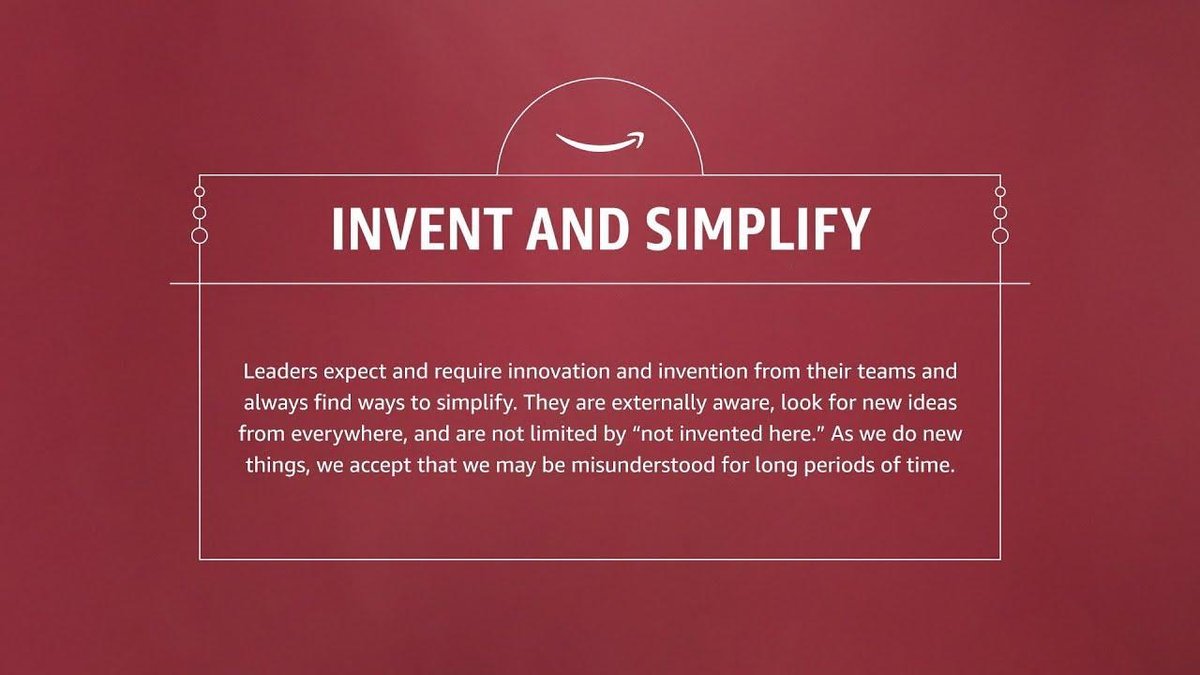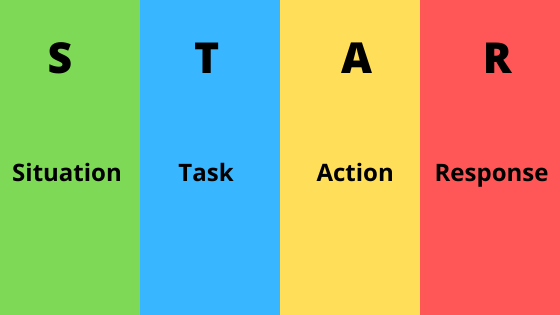However, before securing a job, you have to pass its notorious interview process.
Questions from this interview can come from any of Amazon’s leadership principles, as it helps determine if you’re the best fit for the job. The company’s third leadership principle is Invent and Simplify, and it’s crucial to prepare for related questions.
Research shows that 118 people apply for a single job on average, so you want to make the best impression. However, to have a successful interview, you must practice how you can answer questions based on this principle.
This piece will walk you through the different Invent and Simplify Amazon interview questions and the best way to answer them. Let’s begin.
Invent and Simplify in Amazon’s Words
Amazon leaders expect and require innovation from every team member. As a result, they’re always finding ways to simplify. Also, they’re externally aware and look for new ideas everywhere but are not limited by those who fear innovation. Finally, these leaders know they may be misunderstood for doing new things but choose to do them anyway.
What Does Invent and Simplify Mean?
Since the Invent and Simplify interview is part of the Amazon hiring process, you need to understand it. The ‘invent’ part of this principle means that the company is always creating new things — new platforms, products, etc.
Therefore, Amazon is looking for innovative skills in their employees. A Forbes report shows that 21% of employers look for creative thinking; Amazon is one of them.
On the other hand, the ‘simplify’ part of the principle means that there’s always an opportunity to simplify a process no matter the job you have. Making a process more straightforward is desirable because it increases efficiency. Also, companies want to hire those who can perform tasks quicker and save costs.
What Is Important in Your Interview Answer?
Besides an interest in what you invented or simplified in the past, there are vital things your interviewer is looking for. Amazon is always curious, and they want people with similar traits and creativity. Therefore, they would also ask you innovation interview questions. For example: tell me about a time when you were innovative.
Amazon is also interested in people that can find answers by researching how other departments and industries do things. Unlike the ‘learn and be curious’ principle, they’re looking to see how you use what you’ve learned to bring innovation into the company. More importantly, they need people who will improve things instead of remaining with the status quo.
Five Leading Amazon Interview Questions for ‘Invent and Simplify
The are several questions an interviewer will ask you relating to your ‘invent and simplify’ skills. Below are the top five questions to prepare for:
Tell me about a time when you invented something.
What are the improvements you made at your current company?
Tell me about a time you provided a simple solution to a complex problem
Tell me about a time you thought outside the box (creatively) to sell a product or close a sale
Tell me about the most innovative project you’ve worked on
Using the STAR Method to Frame Your Answers
The best way to answer Amazon Invent and Simplify questions is with the STAR technique – Situation, Task, Action, and Result. It requires giving a real-life example of how you previously handled a specific problem. However, note that your past performance doesn’t translate to you meeting the requirements of this present job.
So, think of a situation relating to the Amazon Invent and Simplify questions above. Next, share details about this problem simply and compellingly. Don’t ramble; instead, give a direct answer.
Below is a detailed breakdown of the STAR principle.
Situation: You should set the stage for your story by sharing the context around the task or the challenge you handled. Relevant work situations are crucial based on the transferable experience you possess.
Task: Describe your role in handling the assignment. This means the goal set out for you. Unlike the situation component, consider just one of two points that best illustrate the task.
Action: Explain how you handled the situation and achieved the goal. This part requires an in-depth description because this convinces the interviewer that you were indeed involved.
Result: Share the outcome of your actions. It is a crucial part of your response, but you should spend less time explaining it than you did with ‘action.’ Ensure you quantify your success; a tip is to stick to the most impressive results.
Using these components will give you a more focused answer. In addition, you’ll provide the Amazon interviewer with a narrative they can follow in determining your qualification.
Sample Answers for Three Amazon Invent and Simplify Questions Using the STAR Method
It’s one thing to know how to tap into the hidden job market and another to ace the recruitment process. To ensure you know what to expect, here are answers to Amazon Invent and Simplify interview questions using the STAR method.
Question: What are the improvements you made at your current company?
Situation: We were utilizing an Enterprise Service Bus in a project. One of its functions was to record the time whenever a web service request arrived, and we attended to it. This information helped us measure the response time performance of our web services. However, the database continued to grow as the company expanded.
Task: We had to create a system to keep this growth in check. We also had to make recent data available online for three months while keeping older data offline.
Action: I created a tool that automated this goal. After configuring the software, it automatically locates the table partition in scopes, creates a backup, and zips the backup. Finally, this tool generates SQL scripts to help clean sections it backed up.
Result: We saved days of work each month. We also used this tool for cleaning up history logs from consumers’ records.
Question: Tell me about a time you thought outside the box to sell a product or close a sale
Situation: There was a SaaS product we needed to add to our client's human resources platform. Our target markets were the academic and healthcare sectors and they both offered tremendous opportunities. However, I found the healthcare market more attractive.
Task: The problem was that most healthcare clients preferred to use one type of HR platform while the academic customers were open to different kinds. The technical team had issues integrating a solution that worked in every situation. We needed to build several solutions to service both markets.
Action: I understood the project’s complexity. So I created a presentation demonstrating to business owners and senior stakeholders the importance of focusing on the healthcare market and revisiting the academic market subsequently.
Result: Eventually, I convinced the business owners that there was a need to simplify the approach. Additionally, we focused on the larger market and built an ideal solution for our customers.
Question: Tell me about a time you provided a simple solution to a complex problem
Situation: In my previous role as a digital marketer, my company decided to focus on email marketing and looked to improve its number of email subscribers quickly.
Task: As the manager, my goal was to increase the email list by 50% within a single quarter.
Action: I upgraded our content by adding incentivized email subscription. In addition, I worked with the marketing team to host a webinar that required people to enter their email addresses to register. This significantly boosted our email list.
Result: My strategy helped increase our subscribers from 25,000 to 40,000 in three months. This result far exceeded our goal by 20%.
Tips to Impress Your Amazon Interviewer
Here are tips to help you prepare your answers for Amazon’s Invent and Simplify questions.
Get Used to Finding a Suitable Example in 30 Seconds: You can practice with a timer before you go for the interview. Then, practice answering the questions by providing necessary information only.
Focus on Essential Details: Behavioral stories are common, and interviewers hear them frequently. Therefore, you don’t want to lose their attention by rambling. Instead, share your stories with some people before the interview to gain perspective on what to cut off.
Talk About You: Don’t get shy about your accomplishments. You need to concentrate on your impact and not the overall action of the team. For instance, if you’re into Cybersecurity, talk about your achievements in the security industry.
Expect Follow-Up Questions: Always expect the interviewer to ask follow-up questions. Listen to the way the interviewer asks the question; it will give you clues about what they’re looking to assess in your answer.
Final Thoughts
Amazon interviews can be pretty tricky to answer. However, by using the STAR method, you’ll be able to provide organized answers. STAR technique allows the interviewer to understand the tasks you handled, the actions, and the outcome.
If you need a mentor to guide you through the interview process for the Invent and Simplify principle, MentorCruise can help you with that. Our mentors help to improve your chances of landing the perfect job. Start your mentoring journey by signing up today.









